Some corn hybrids have ears that are able take advantage of a reduced plant density. We classify these hybrids as flex ear type hybrids. Understanding the ability of a corn hybrid to flex can result in a better understanding of a hybrids yield potential in different soil types and environments, optimize variable rate seeding (VRS) recommendations and optimize ROI.
A gap in a corn row represents two-thirds of an initial seedling population. To compensate for the lost plant and lost potential yield, the two ears adjacent to the gap must each produce 50% more kernels.
The purpose of this project was to develop a fast and reliable method of determining the ear flex level of corn hybrids. To do this, in-row gaps were utilized – “GAPs Method”. Gaps are a result of ungerminated or absent seed. The gap space between plants can be used to estimate the hybrid response level to reduced plant density and the associated increased space for root development. It is predicted that the higher a hybrid’s inner flex potential is, the bigger the ear size adjacent to a GAP will be.
Project design
Multi-hybrids plots were used, and observations were taken from those hybrids. Soil type, planting date, seedling population were noted at each site.
Number of kernels per ear (average) were noted from 10 normal ears and from 10 “GAP” ears. The “GAP” ears are the ones adjacent to a gap in a corn row. It is assumed that the more a hybrid flexes, the more kernels there will be on the “GAP” ears, resulting as a response to greater room for root development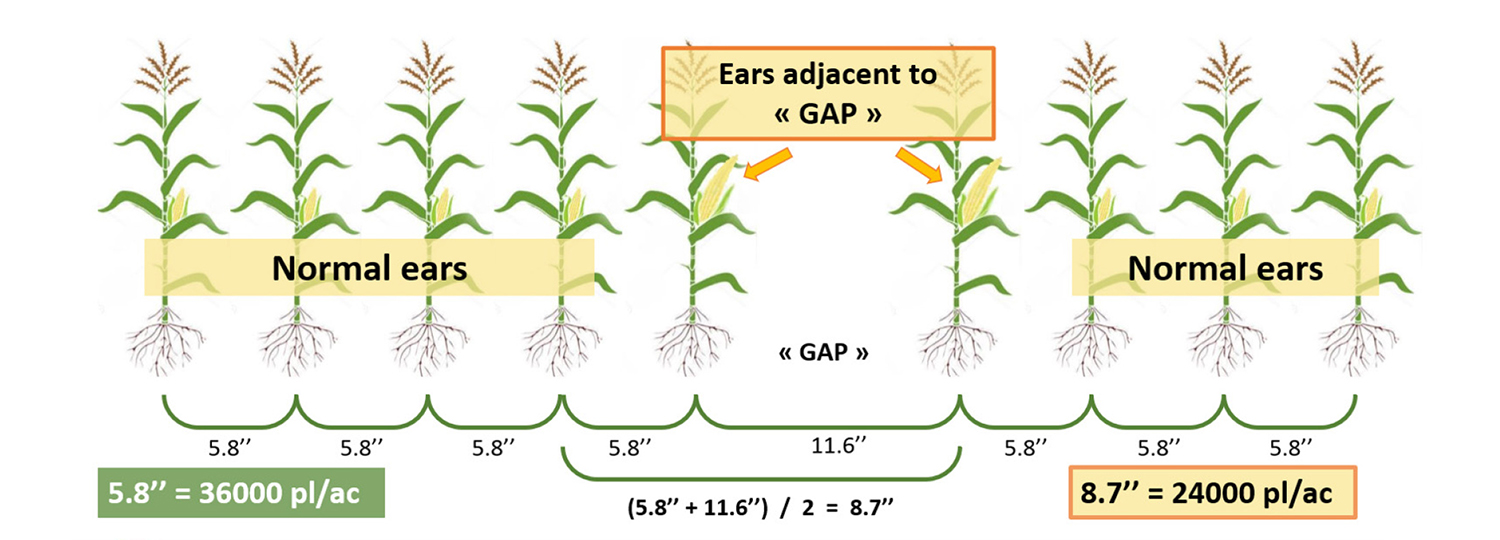
In this project, the Flex Score was calculated in relation to the 100 Flex of the same hybrid (#kernels normal ear X 50%).The formula used in this project for the Flex Score was: 

Results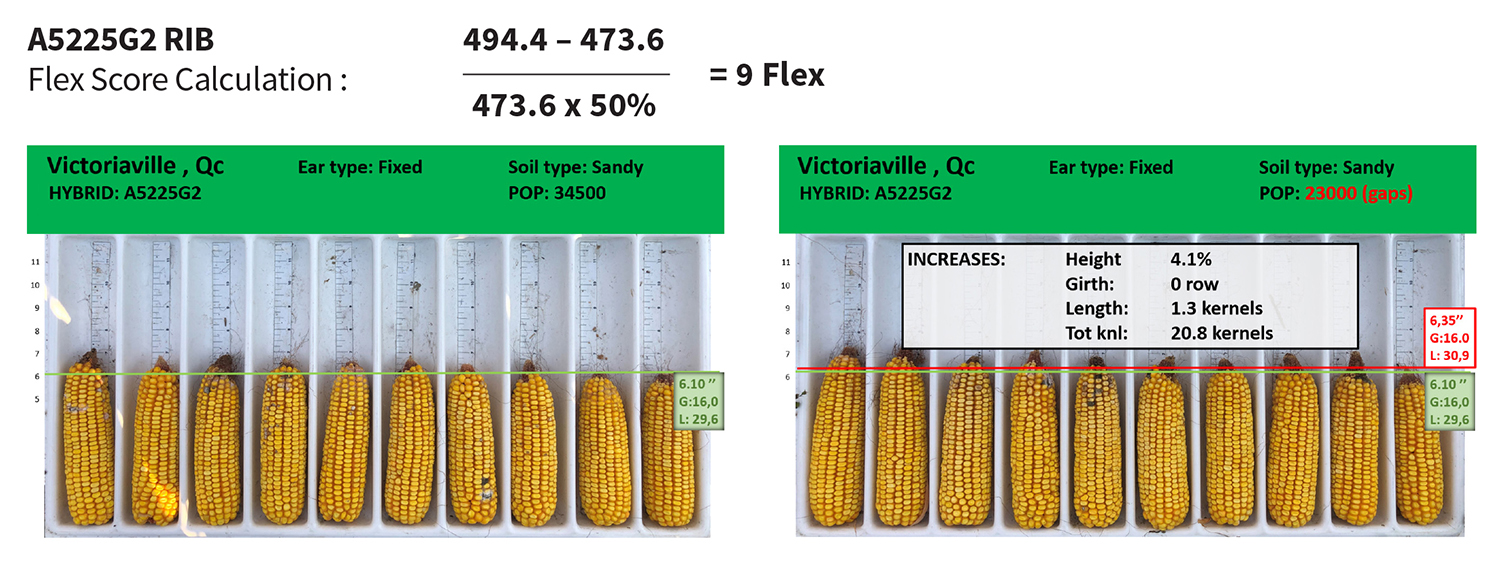

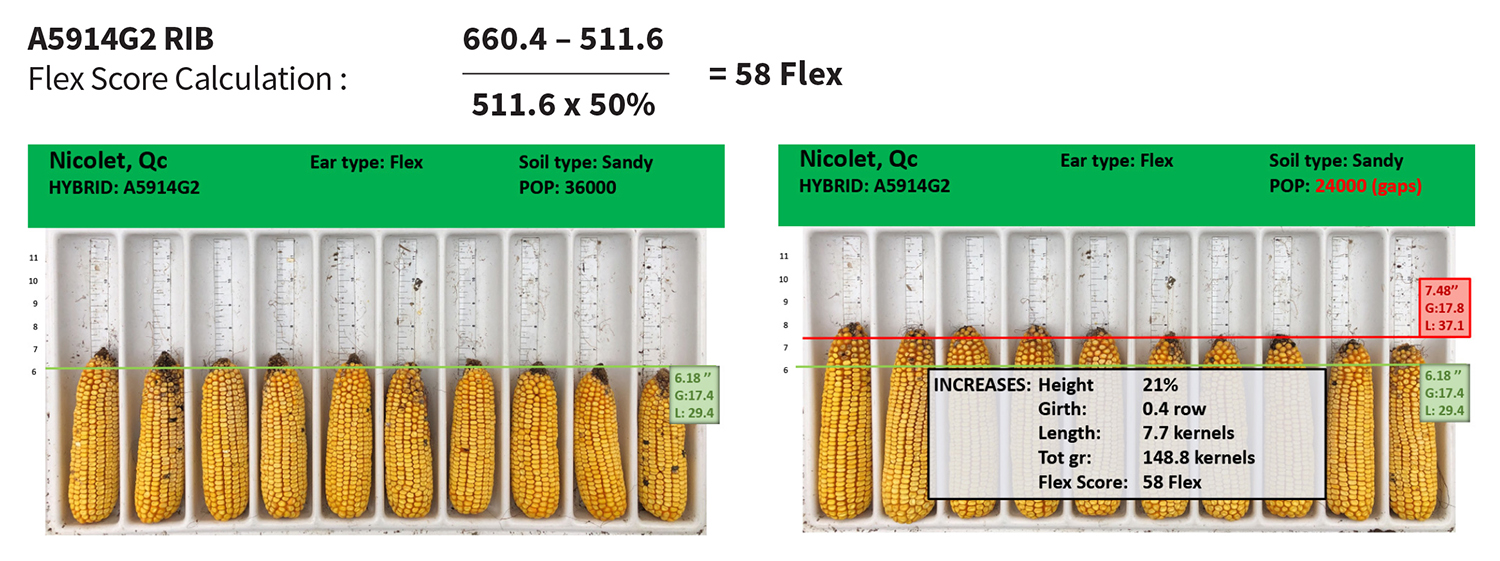
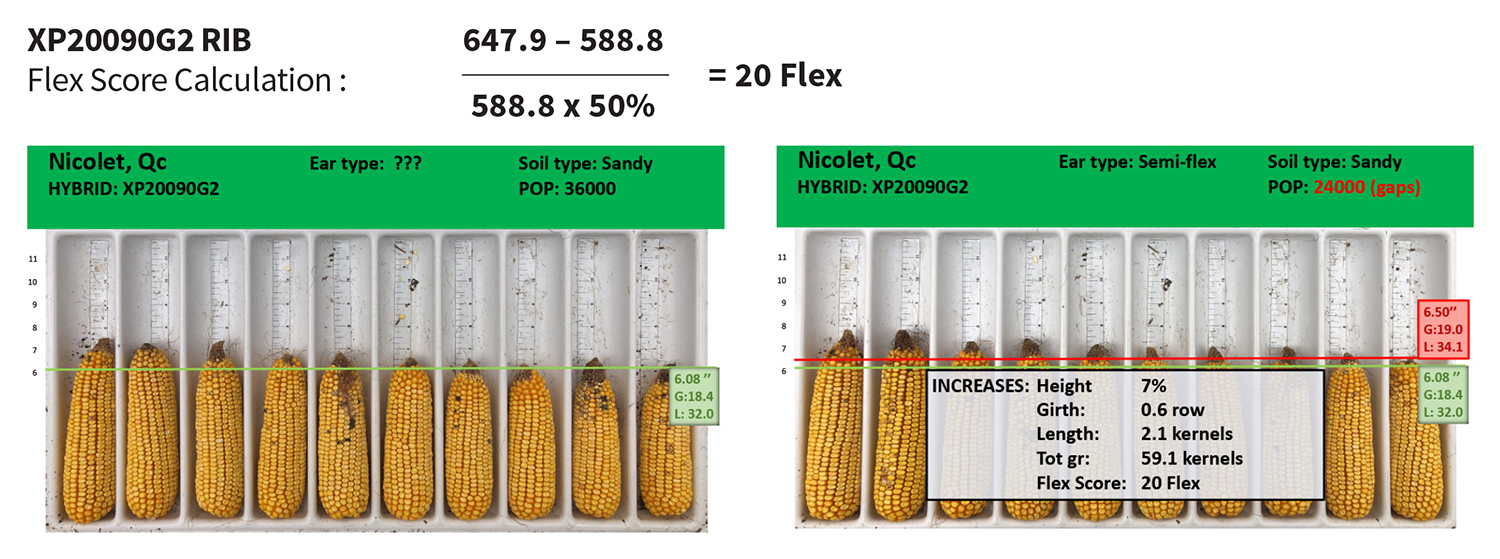

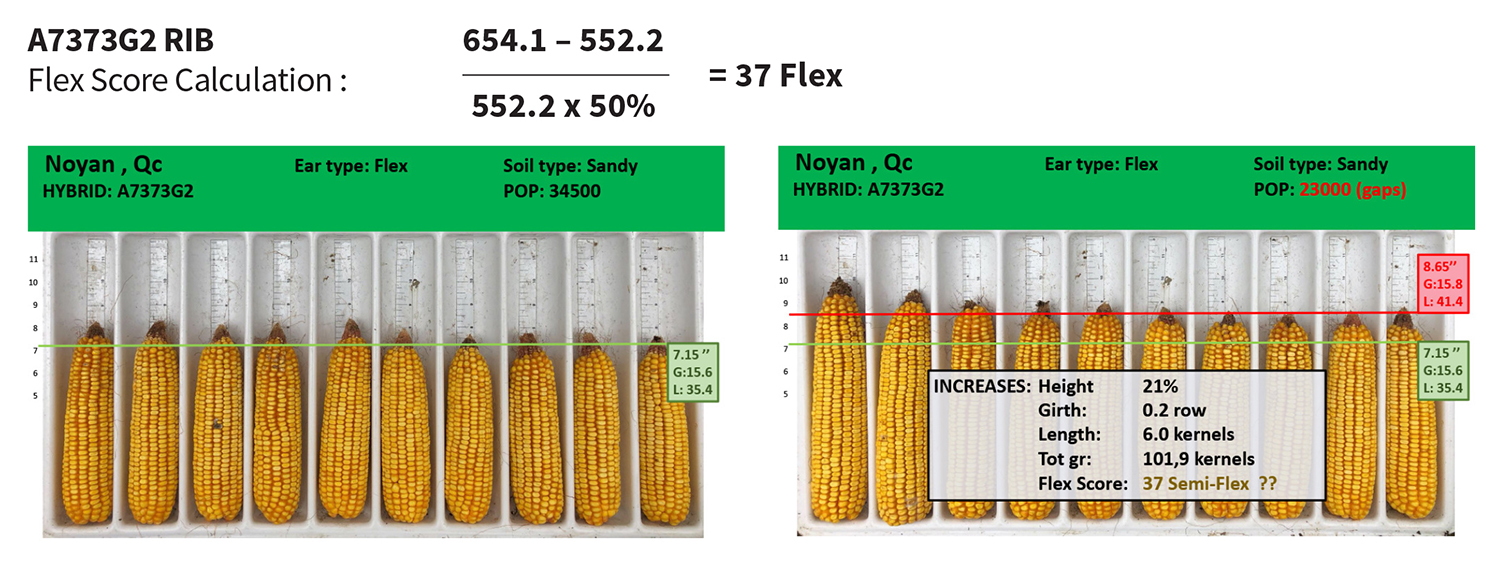
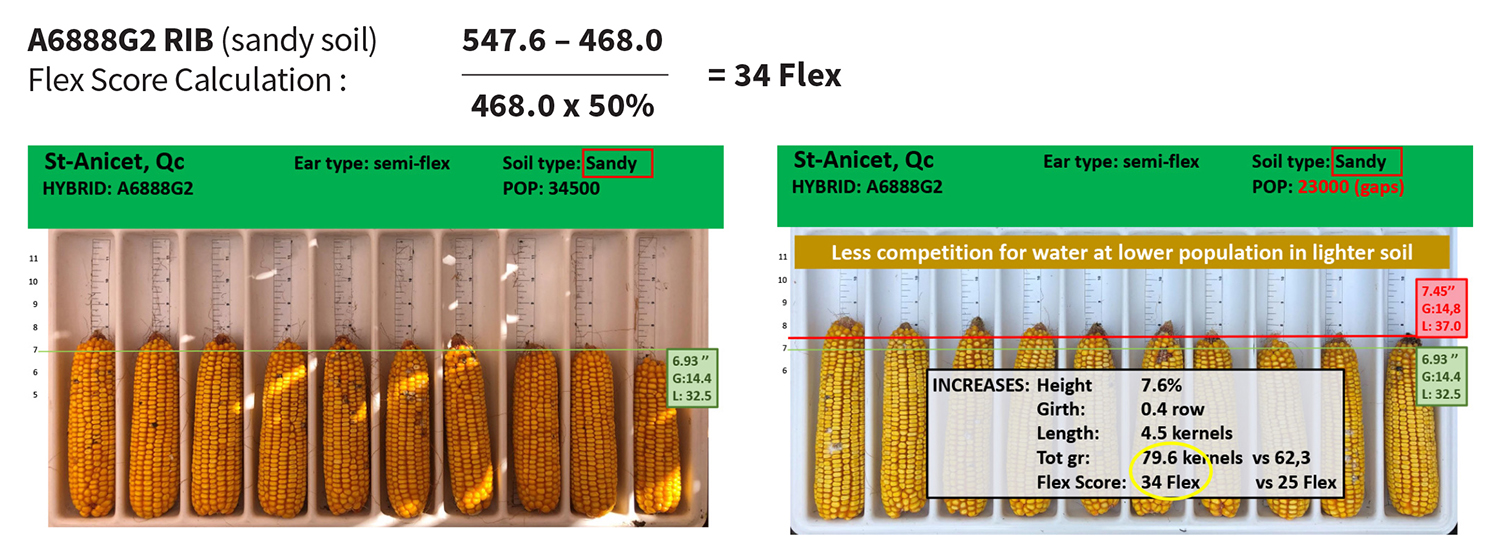
Conclusion
Based on the cob board pictures above and the graphs and summary table below, you will be able to get a feel for the ear type for a lot of the PRIDE Seeds hybrids in the current line-up.
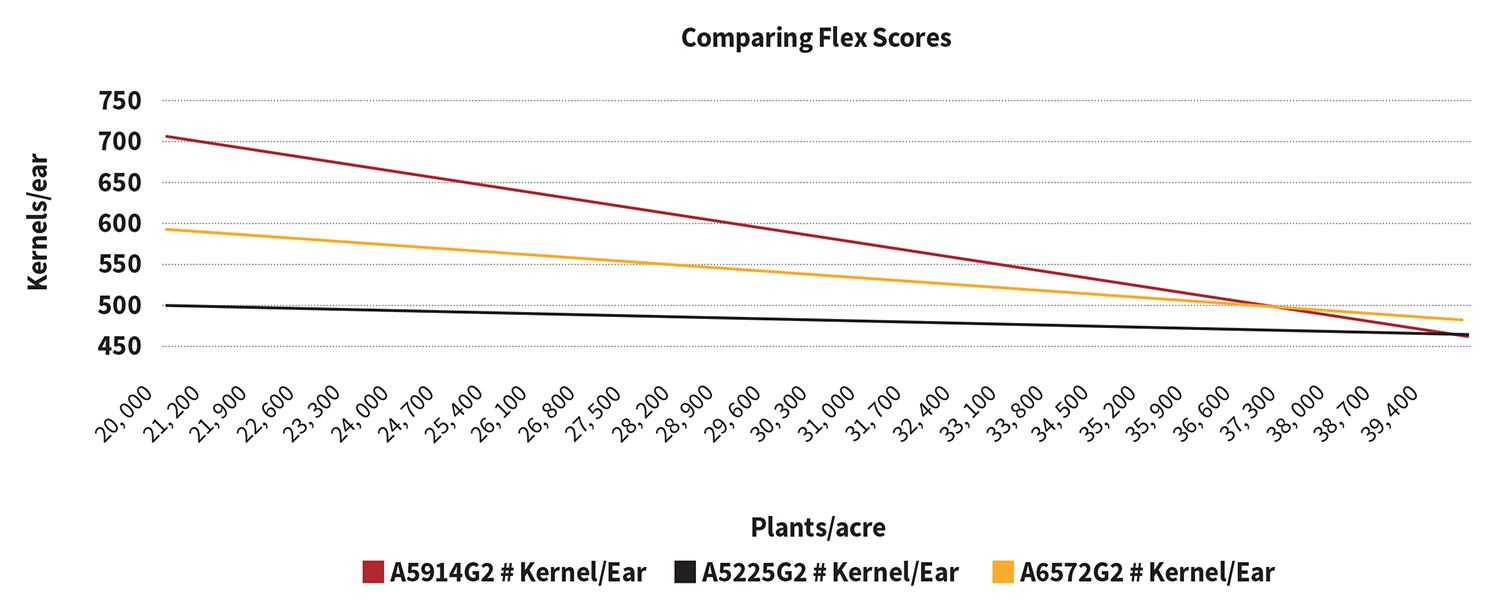
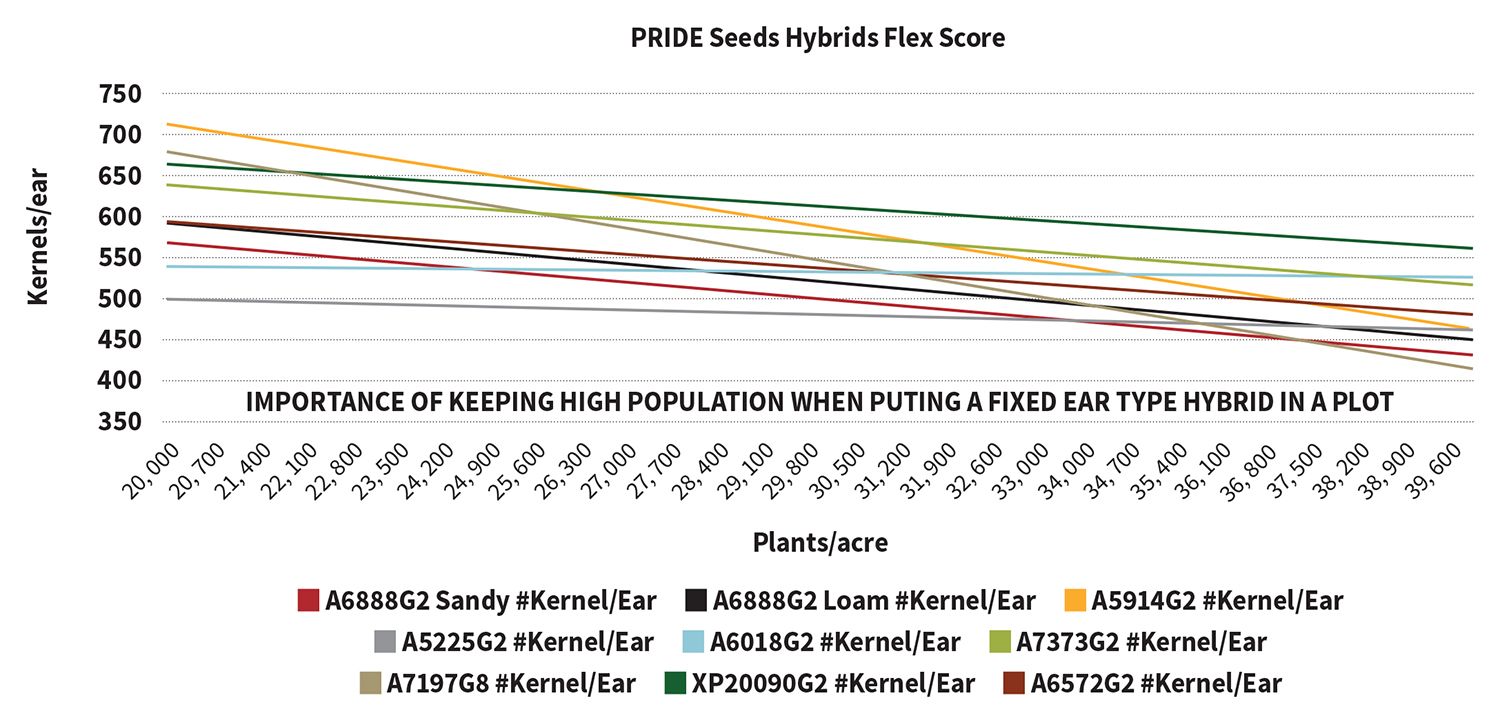
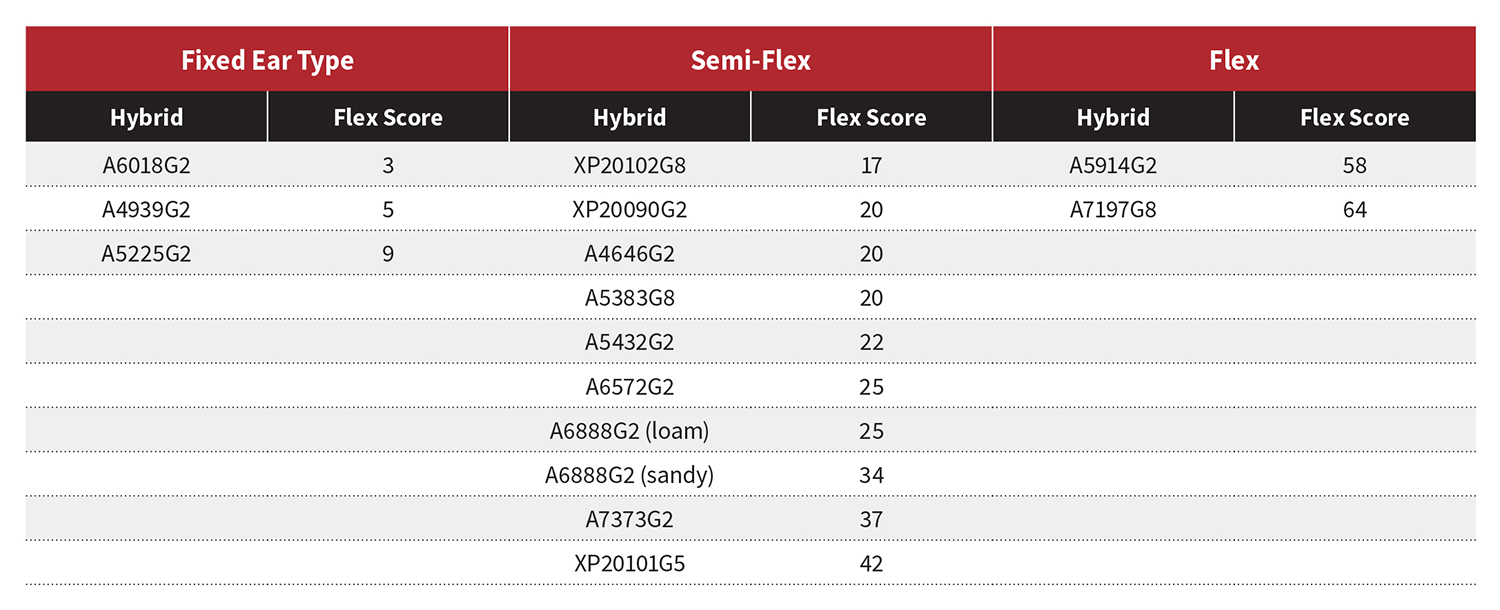
It is important to remember that the level of flexibility of a hybrid may vary from field to field, year over year. This is the first year of the project and the degree of precision will be enhanced as time goes on. The Agronomy team plans to continue to compare same hybrids (and more hybrids) on different soil types next season.
For the PDF of this project and the rest of the PRIDE Seeds 2020 Agronomy Projects CLICK HERE



